
Wine Culture and Information since 2002 - Volume 22
 Wine Culture and Information since 2002 - Volume 22 |
|
Contrasts of Freisa and RabosoTwo reds having personality - the former from Piedmont, the latter from Veneto - are being compared this month in our glasses |
|
Let's talk about red wines again by comparing two Italian varieties, protagonists of interesting wines in their respective territories. The grapes we are going to compare this month in our glasses are Freisa - renowned red variety from Piedmont - and Raboso, a grape from Veneto particularly common in the area of Piave appellation. Wines produced with these red varieties are very different one from each other, in particular in aromas and taste. They however share - like to say - a common recent history witnessing a revaluation and a renewed interest, after having passed a long period of apparent oblivion. This is particularly true for Raboso - a difficult and harsh grape - that, because of its aggressive organoleptic qualities, has suffered the effects of modern taste and fads for other wines. Freisa, certainly one of the most renowned varieties of Piedmont, has suffered the notoriety and success of other wines of the region. The notoriety of Nebbiolo and Barbera in recent years, have determined a significant loss of interest for Freisa - and other varieties of Piedmont - while however keeping its own identity in the areas in which it is traditionally found. The same fate, like to say, has limited the spreading of Raboso, as - in the last twenty years - red wines in Veneto have been mainly identified with Valpolicella, therefore Amarone. The determination of producers in their respective territories and regions, has however allowed Freisa and Raboso to proudly keep their own wine making dignity. This is particularly true for Raboso which, after a long time of scarce spreading and notoriety outside from its territory, it is now becoming one of the identifying red berried grapes of Veneto. Freisa and Raboso offer to the senses of tasters wines of remarkable and identifiable personality, however very different one from each other, perfect for a tasting by contrast.
|
|
A native grape of Piedmont, Freisa is an important red berried variety mainly found in Monferrato area and in the province of Asti, as well as in the territories of Canavese and Biella. A significant presence of Freisa is also found in Langhe, where it mostly suffers from the notoriety of Nebbiolo and the other grapes of that area. In these lands, Freisa is traditionally produced in two wine making styles: still and sparkling. In Piedmont, Freisa is part of many production disciplinary of Denominazione d'Origine Controllata of which the most famous ones are Freisa d'Asti, Freisa del Monferrato, Langhe Freisa and Freisa di Chieri. It should be noticed all the appellations in which Freisa is used provide for still and sparkling styles and, in some of them, the wines can also be blended to other traditional varieties of the territory. This means it is sometimes possible a “Freisa” wine is not made from this variety only. There are no reliable information about the origin of Freisa, however many support it is a grape found in Piedmont since remote times. In particular, it is believed Freisa originated from the area between Turin and Asti. The first written mentions of this grape are dated back to 1500s and, since those times, it was considered a grape making good quality wines. Research done on Freisa's DNA revealed a certain relation to Nebbiolo and today are known two main clones: Freisa Piccola (Small Freisa) - the most common and significant clone - and Freisa Grossa (Big Freisa). Wines produced with Freisa are characterized by a good astringency of tannins and a pleasing crispness, not excessively rich in color and with evident purple nuances. The good content in polyphenols makes Freisa suited for the aging in wood, however it should be noticed this variety is mainly vinified in inert containers, including sparkling style and, sometimes, with an appreciable residual of sugar.
|
||||
|
Raboso - which should be properly called Raboso Piave - is mainly cultivated in the province of Padua, specifically in the area along the course of Piave river. The variety must be distinguished from Raboso Veronese - a grape found in this territory - having no genetic connection to Raboso Piave and it is, as a matter of fact, a different variety, despite they share many similarities. The origins of Raboso are still uncertain, including its name. For some it derives from a torrent having the same name, tributary of Piave river, for others it derives from the dialectal term rabioso (that is “angry”) because of the evident acidity and astringency of its wines. Its organoleptic characteristics have in fact limited the spreading of Raboso, frequently used by blending it to other wines and rarely alone, considered by many rustic and harsh. Raboso - also known as Friularo and Rabosa Friulara - seems to be introduced in the territory of Piave in the 1300s and, in 1600s, its presence was known to reach the areas of Istria. It is in fact believed Raboso reached the territory of Piave coming from Friuli Venezia Giulia - this therefore explaining the name Friularo, that is “from Friuli” - however it is also believed the variety originates from Germany. In Rhineland, in fact, there are many red berried grapes having significant connections to Raboso Piave. Wines produced with this variety offer to the senses of the taster an evident acidity as well as a remarkable astringency, conditions forcing producers to adopt proper wine making techniques. Today, thanks to a better knowledge of Raboso properties, as well as the adoption of specific aging techniques, wines from this grape are more balanced and appreciated. In particular, the use of time and the aging in wood, give Raboso wines the necessary roundness capable of mitigating its “harshness”.
|
Compared to the past tasting by contrast, this month we will compare two wines made with different wine making techniques. The reason is Raboso that, because of its evident acidity and astringency, it is generally aged in wood, a procedure affecting some of its organoleptic qualities. For the sake of truth, Raboso is also vinified in inert containers - usually steel tanks - a technique used when the producer wants to make a sparkling style. Freisa too is frequently vinified as sparkling style, in both cases not suited for our tasting. We will in fact choose a Freisa d'Asti vinified in inert containers and in the still style, preferably having two years. As for Raboso, we will choose a bottle belonging to Piave DOC (Denominazione d'Origine Controllata). Both wines will be poured in their respective tasting glasses and served at the temperature of 18 °C (65 °F). Let's pour Freisa and Raboso in their glasses and begin our tasting by contrast. The first wine of which we will evaluate aspect is Freisa d'Asti. Let's tilt the glass over a white surface and observe the base of the glass: the color of Freisa is brilliant ruby red with a moderate transparency. Let's now observe the edge of the wine towards the opening of the glass in order to evaluate nuances: we will notice - deep and intense - a ruby red hue with an evident purple tinge. Let's now pass to the glass of Piave Raboso, holding it tilted over a white surface. At the base of the glass can be seen an intense ruby red color, sometimes deep, with an evidently lower transparency than Freisa. Nuances of Raboso - observed at the edge of the liquid mass, towards the opening of the glass - confirms a ruby red hue. We will now compare both glasses by holding them side by side: differences in color, transparency and nuances are evident. Freisa and Raboso are characterized by olfactory profiles having substantial differences. In both cases, the main sensations recall red and black fruits as well as flowers. Aromas of Freisa are more oriented towards red fruits, in particular cherry - sometimes recalling black cherry as well - raspberry and strawberry, to which may follow blueberry, blackberry and plum. Among flower aromas found in Freisa are mentioned violet, rose and cyclamen. Raboso aromas are oriented towards black fruits, specifically black cherry, plum and blackberry, frequently followed by blueberry. Flowers which can be found in Raboso mainly are violet and rose. Both Freisa and Raboso can be vinified in wood containers - a technique more common with Raboso - giving wines complex sensations usually enhancing the quality of wines. It should be said that when producers use wood with Freisa, they do not usually tend to exceed with tertiary qualities in order to favor the typical fresh expression of this variety. Let's now proceed with the evaluation of the olfactory profiles of Freisa d'Asti and Piave Raboso, beginning from the wine from Piedmont. By holding the glass in vertical position and without swirling, let's proceed with the first smell allowing the evaluation of wine's opening. From the glass are perceived clean and intense aromas of cherry, plum and raspberry, with an evidently fresh profile. Let's now swirl the glass in order to favor the development of Freisa's aromas and proceed with the second smell. From the glass are perceived aromas of strawberry, violet, cyclamen, blueberry and - sometimes - rose. Let's now pass to the glass of Piave Raboso. The opening of the wine from Veneto is characterized by an evidently more “robust” profile in which can be perceived black cherry, plum and blueberry. After having swirled the glass, proceed with a second smell while discriminating tertiary aromas given by the aging in wood. The profile of Raboso is completed by blackberry and violet, to which can follow - in certain cases - the smell of rose. The gustatory phase of our tasting will reveal an even more evident difference between Freisa and Raboso. Like the previous phases, the first wine we will examine is Freisa d'Asti. The attack of this wine - that is the sensations perceived in the mouth at the first sip - reveals a moderate astringency and a pleasing crispness given by acidity. In the mouth are perceived clean flavors of cherry, raspberry, plum and strawberry, as well as a good structure. Let's now proceed with the evaluation of Piave Raboso's attack and let's take a sip of this wine. We will perceive from the very beginning the substantial differences from Freisa: in the wine from Veneto the sensations of astringency and acidity are evidently more intense and dominant. Roundness perceived in the mouth is mainly given by the aging in wood, with a fuller body than Freisa. In the mouth are perceived pleasing flavors of black cherry, plum, blueberry and blackberry, confirming the good correspondence to the nose. The last phase of our tasting by contrast will focus on the final sensations left in the mouth by both wines after having swallowed them. The finish of Freisa d'Asti has a good persistence, leaving in the mouth pleasing flavors of cherry, raspberry, plum and strawberry, as well as a pleasing sensation of acidity. The finish of Piave Raboso is characterized by a good persistence, in which are clearly perceived - in good evidence - astringency and crispness given by acidity. In the mouth are still perceived the pleasing flavors of black cherry, plum, blueberry and blackberry as well as a light roundness given by alcohol and the aging in wood. Let's now compare the differences of the finish in both wines: the structure of Raboso is clearly more robust than Freisa as well as the sensation of crispness produced by acidity.
|
||||||||
Wines of the Month |
|
|
|
Score legend Prices are to be considered as indicative. Prices may vary according to the country or the shop where wines are bought |
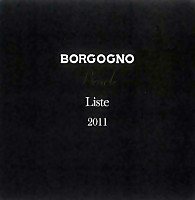
|
|
Barolo Liste 2011 |
|
| Borgogno (Piedmont, Italy) | |
 Nebbiolo Nebbiolo | |
| Price: € 40.00 | Score: |
 Brilliant ruby red and nuances of garnet red, moderate transparency. Brilliant ruby red and nuances of garnet red, moderate transparency. Intense, clean, pleasing, refined and elegant, starts with hints of
cherry, plum and violet followed by aromas of raspberry, rose, strawberry,
pomegranate, blueberry, cyclamen, tobacco, vanilla, carob and menthol. Intense, clean, pleasing, refined and elegant, starts with hints of
cherry, plum and violet followed by aromas of raspberry, rose, strawberry,
pomegranate, blueberry, cyclamen, tobacco, vanilla, carob and menthol.
 Tannic attack and however balanced by alcohol, full body, intense
flavors, agreeable. Tannic attack and however balanced by alcohol, full body, intense
flavors, agreeable.
 Persistent finish with flavors of cherry, plum and raspberry. Persistent finish with flavors of cherry, plum and raspberry. At least 3 years in cask. At least 3 years in cask. |
|
 Game, Roasted meat, Stewed and braised meat, Hard cheese Game, Roasted meat, Stewed and braised meat, Hard cheese |
|
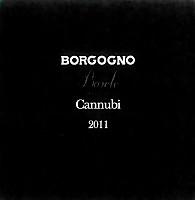
|
|
Barolo Cannubi 2011 |
|
| Borgogno (Piedmont, Italy) | |
 Nebbiolo Nebbiolo | |
| Price: € 55.00 | Score: |
 Brilliant ruby red and nuances of garnet red, moderate transparency. Brilliant ruby red and nuances of garnet red, moderate transparency. Intense, clean, pleasing, refined and elegant, starts with hints of
cherry, plum and violet followed by aromas of raspberry, rose, strawberry,
vanilla, blueberry, chocolate, leather, licorice, mace, cinnamon and
menthol. Intense, clean, pleasing, refined and elegant, starts with hints of
cherry, plum and violet followed by aromas of raspberry, rose, strawberry,
vanilla, blueberry, chocolate, leather, licorice, mace, cinnamon and
menthol.
 Tannic attack and however balanced by alcohol, full body, intense
flavors, pleasing crispness. Tannic attack and however balanced by alcohol, full body, intense
flavors, pleasing crispness.
 Very persistent finish with long flavors of cherry, plum and raspberry. Very persistent finish with long flavors of cherry, plum and raspberry. 4 years in cask. 4 years in cask. |
|
 Game, Roasted meat, Stewed and braised meat with mushrooms, Hard cheese Game, Roasted meat, Stewed and braised meat with mushrooms, Hard cheese |
|
|
|
|
Il Padrone delle Vigne Bianco 2015 |
|
| Tabarrini (Umbria, Italy) | |
 Trebbiano Spoletino Trebbiano Spoletino | |
| Price: € 10.00 | Score: |
 Intense straw yellow and nuances of straw yellow, very transparent. Intense straw yellow and nuances of straw yellow, very transparent. Intense, clean, pleasing and refined, starts with hints of apple, melon
and plum followed by aromas of hawthorn, peach, citrus fruits, pear and
mineral. Intense, clean, pleasing and refined, starts with hints of apple, melon
and plum followed by aromas of hawthorn, peach, citrus fruits, pear and
mineral.
 Crisp attack and however balanced by alcohol, good body, intense
flavors, pleasing roundness. Crisp attack and however balanced by alcohol, good body, intense
flavors, pleasing roundness.
 Persistent finish with flavors of melon, peach and plum. Persistent finish with flavors of melon, peach and plum. At least 6 months in steel tanks. At least 6 months in steel tanks. |
|
 Pasta with fish, Sauteed white meat, Stuffed pasta, Broiled fish, Mushroom soups Pasta with fish, Sauteed white meat, Stuffed pasta, Broiled fish, Mushroom soups |
|
|
|
|
Il Padrone delle Vigne 2015 |
|
| Tabarrini (Umbria, Italy) | |
 Sangiovese (80%), Sagrantino (10%), Barbera (10%) Sangiovese (80%), Sagrantino (10%), Barbera (10%) | |
| Price: € 12.00 | Score: |
 Brilliant ruby red and nuances of ruby red, moderate transparency. Brilliant ruby red and nuances of ruby red, moderate transparency. Intense, clean, pleasing and refined, starts with hints of black
cherry, plum and blueberry followed by aromas of pomegranate, violet,
geranium, carob and vanilla. Intense, clean, pleasing and refined, starts with hints of black
cherry, plum and blueberry followed by aromas of pomegranate, violet,
geranium, carob and vanilla.
 Properly tannic attack and however balanced by alcohol, good body,
intense flavors, pleasing crispness. Properly tannic attack and however balanced by alcohol, good body,
intense flavors, pleasing crispness.
 Persistent finish with flavors of black cherry, plum and pomegranate. Persistent finish with flavors of black cherry, plum and pomegranate. 1 months in cask, 3 months in steel tanks. 1 months in cask, 3 months in steel tanks. |
|
 Pasta with meat, Sauteed meat with mushrooms, Broiled meat and barbecue Pasta with meat, Sauteed meat with mushrooms, Broiled meat and barbecue |
|
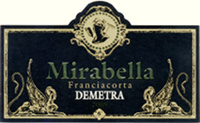
|
|
Franciacorta Extra Brut Demetra 2009 |
|
| Mirabella (Lombardy, Italy) | |
 Chardonnay (70%), Pinot Nero (20%), Pinot Bianco (10%) Chardonnay (70%), Pinot Nero (20%), Pinot Bianco (10%) | |
| Price: € 24.00 | Score: |
 Brilliant straw yellow and nuances of straw yellow, fine and persistent
perlage, very transparent. Brilliant straw yellow and nuances of straw yellow, fine and persistent
perlage, very transparent.
 Intense, clean, pleasing, refined and elegant, starts with hints of
banana, citrus fruits and bread crust followed by aromas of apple, acacia,
praline, butter, yeast, hazelnut, grapefruit, kiwi, honey, plum and hints
of vanilla. Intense, clean, pleasing, refined and elegant, starts with hints of
banana, citrus fruits and bread crust followed by aromas of apple, acacia,
praline, butter, yeast, hazelnut, grapefruit, kiwi, honey, plum and hints
of vanilla.
 Effervescent and crisp attack, however balanced by alcohol, good body,
intense flavors, agreeable. Effervescent and crisp attack, however balanced by alcohol, good body,
intense flavors, agreeable.
 Persistent finish with flavors of apple, banana and grapefruit. Persistent finish with flavors of apple, banana and grapefruit. A part of Chardonnay ferments in barrique. Refermented in bottle on its
lees for at least 55 months. A part of Chardonnay ferments in barrique. Refermented in bottle on its
lees for at least 55 months.
|
|
 Pasta with fish, Roasted fish, Roasted white meat Pasta with fish, Roasted fish, Roasted white meat |
|
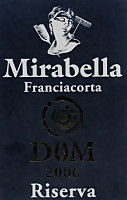
|
|
Franciacorta Dosaggio Zero Riserva D0M 2006 |
|
| Mirabella (Lombardy, Italy) | |
 Chardonnay (60%), Pinot Nero (25%), Pinot Bianco (15%) Chardonnay (60%), Pinot Nero (25%), Pinot Bianco (15%) | |
| Price: € 39.00 | Score: |
 Brilliant straw yellow and nuances of straw yellow, fine and persistent
perlage, very transparent. Brilliant straw yellow and nuances of straw yellow, fine and persistent
perlage, very transparent.
 Intense, clean, pleasing, refined and elegant, starts with hints of
banana, apple and praline followed by aromas of pear, bread crust,
croissant, butter, hazelnut, grapefruit, yeast, acacia, kiwi, honey and
honey. Intense, clean, pleasing, refined and elegant, starts with hints of
banana, apple and praline followed by aromas of pear, bread crust,
croissant, butter, hazelnut, grapefruit, yeast, acacia, kiwi, honey and
honey.
 Crisp and effervescent attack, however balanced by alcohol, good body,
intense flavors, pleasing roundness. Crisp and effervescent attack, however balanced by alcohol, good body,
intense flavors, pleasing roundness.
 Very persistent finish with long flavors of apple, banana and pear. Very persistent finish with long flavors of apple, banana and pear. A part of the base wine ferments in barrique. Refermented in bottle on
its lees for at least 70 months. A part of the base wine ferments in barrique. Refermented in bottle on
its lees for at least 70 months.
|
|
 Stuffed pasta, Roasted white meat, Roasted fish, Stewed fish with mushrooms Stuffed pasta, Roasted white meat, Roasted fish, Stewed fish with mushrooms |
|
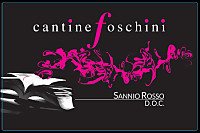
|
|
Sannio Rosso 2015 |
|
| Cantine Foschini (Campania, Italy) | |
 Piedirosso (80%), Sangiovese (20%) Piedirosso (80%), Sangiovese (20%) | |
| Price: € 6.00 | Score: |
 Brilliant ruby red and nuances of ruby red, moderate transparency. Brilliant ruby red and nuances of ruby red, moderate transparency. Intense, clean and pleasing, starts with hints of black cherry, plum
and raspberry followed by aromas of violet, blueberry, cyclamen and hints
of vanilla. Intense, clean and pleasing, starts with hints of black cherry, plum
and raspberry followed by aromas of violet, blueberry, cyclamen and hints
of vanilla.
 Properly tannic attack and however balanced by alcohol, good body,
intense flavors, pleasing crispness. Properly tannic attack and however balanced by alcohol, good body,
intense flavors, pleasing crispness.
 Pretty persistent finish with flavors of black cherry, plum and
raspberry. Pretty persistent finish with flavors of black cherry, plum and
raspberry.
 Aged in cask. Aged in cask. |
|
 Pasta with meat, Sauteed meat with mushrooms, Cold cuts Pasta with meat, Sauteed meat with mushrooms, Cold cuts |
|
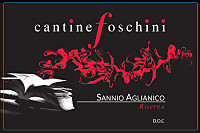
|
|
Sannio Aglianico Riserva 2013 |
|
| Cantine Foschini (Campania, Italy) | |
 Aglianico Aglianico | |
| Price: € 7.00 | Score: |
 Brilliant ruby red and nuances of garnet red, little transparency. Brilliant ruby red and nuances of garnet red, little transparency. Intense, clean, pleasing and refined, starts with hints of black
cherry, plum and dried violet followed by aromas of blackberry, blueberry,
vanilla, chocolate and menthol. Intense, clean, pleasing and refined, starts with hints of black
cherry, plum and dried violet followed by aromas of blackberry, blueberry,
vanilla, chocolate and menthol.
 Properly tannic attack and however balanced by alcohol, good body,
intense flavors, agreeable. Properly tannic attack and however balanced by alcohol, good body,
intense flavors, agreeable.
 Persistent finish with flavors of black cherry, plum and blueberry. Persistent finish with flavors of black cherry, plum and blueberry. 22 months in barrique, 12 months in steel tanks. 22 months in barrique, 12 months in steel tanks. |
|
 Stuffed pasta with mushrooms, Roasted meat, Stewed meat with mushrooms Stuffed pasta with mushrooms, Roasted meat, Stewed meat with mushrooms |
|
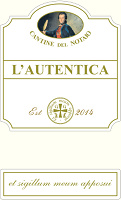
|
|
L'Autentica 2014 |
|
| Cantine del Notaio (Basilicata, Italy) | |
 Moscato Bianco (70%), Malvasia Bianca (30%) Moscato Bianco (70%), Malvasia Bianca (30%) | |
| Price: € 29.00 - 50cl | Score: |
 Brilliant amber yellow and nuances of amber yellow, transparent. Brilliant amber yellow and nuances of amber yellow, transparent. Intense, clean, pleasing, refined and elegant, starts with hints of
raisin, dried apricot and honey followed by aromas of quince jam, date,
peach jam, candied fruits, lychee, lavender, citrus fruit peel, dried fig,
vanilla and nail polish. Intense, clean, pleasing, refined and elegant, starts with hints of
raisin, dried apricot and honey followed by aromas of quince jam, date,
peach jam, candied fruits, lychee, lavender, citrus fruit peel, dried fig,
vanilla and nail polish.
 Sweet attack with a pleasing crispness, however balanced by alcohol,
good body, intense flavors, pleasing roundness. Sweet attack with a pleasing crispness, however balanced by alcohol,
good body, intense flavors, pleasing roundness.
 Persistent finish with flavors of raisin, dried apricot, lychee and
date. Persistent finish with flavors of raisin, dried apricot, lychee and
date.
 12 months in barrique, 12 months in bottle. 12 months in barrique, 12 months in bottle. |
|
 Hard and piquant cheese, Fruit tarts, Confectionery Hard and piquant cheese, Fruit tarts, Confectionery |
|
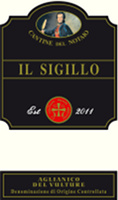
|
|
Aglianico del Vulture Il Sigillo 2011 |
|
| Cantine del Notaio (Basilicata, Italy) | |
 Aglianico Aglianico | |
| Price: € 38.00 | Score: |
 Intense ruby red and nuances of garnet red, little transparency. Intense ruby red and nuances of garnet red, little transparency. Intense, clean, pleasing, refined and elegant, starts with hints of
black cherry, plum and blackberry followed by aromas of dried violet,
blueberry, vanilla, pink pepper, black currant, mace, cinnamon, leather,
tobacco and menthol. Intense, clean, pleasing, refined and elegant, starts with hints of
black cherry, plum and blackberry followed by aromas of dried violet,
blueberry, vanilla, pink pepper, black currant, mace, cinnamon, leather,
tobacco and menthol.
 Tannic attack and however balanced by alcohol, full body, intense
flavors, pleasing roundness. Tannic attack and however balanced by alcohol, full body, intense
flavors, pleasing roundness.
 Very persistent finish with long flavors of black cherry, plum and
blackberry. Very persistent finish with long flavors of black cherry, plum and
blackberry.
 24 months in cask, 24 months in bottle. 24 months in cask, 24 months in bottle. |
|
 Game, Roasted meat, Braised and stewed meat, Hard cheese Game, Roasted meat, Braised and stewed meat, Hard cheese |
|
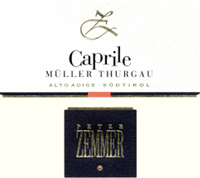
|
|
Alto Adige Müller Thurgau Caprile 2016 |
|
| Peter Zemmer (Alto Adige, Italy) | |
 Müller Thurgau Müller Thurgau | |
| Price: € 10.40 | Score: |
 Brilliant greenish yellow and nuances of greenish yellow, very
transparent. Brilliant greenish yellow and nuances of greenish yellow, very
transparent.
 Intense, clean, pleasing and refined, starts with hints of gooseberry,
peach and elder flower followed by aromas of pear, banana, apple, nettle
and broom. Intense, clean, pleasing and refined, starts with hints of gooseberry,
peach and elder flower followed by aromas of pear, banana, apple, nettle
and broom.
 Crisp attack and however balanced by alcohol, good body, intense
flavors, agreeable. Crisp attack and however balanced by alcohol, good body, intense
flavors, agreeable.
 Persistent finish with flavors of gooseberry, peach and pear. Persistent finish with flavors of gooseberry, peach and pear. Aged in steel tanks. Aged in steel tanks. |
|
 Crustacean and vegetable appetizers, Risotto with crustaceans and fish, Sauteed fish, Dairy products Crustacean and vegetable appetizers, Risotto with crustaceans and fish, Sauteed fish, Dairy products |
|
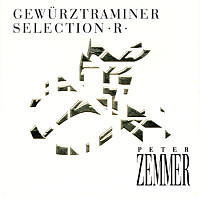
|
|
Alto Adige Gewürztraminer Selection R 2016 |
|
| Peter Zemmer (Alto Adige, Italy) | |
 Gewürztraminer Gewürztraminer | |
| Price: € 18.10 | Score: |
 Brilliant golden yellow and nuances of golden yellow, very transparent. Brilliant golden yellow and nuances of golden yellow, very transparent. Intense, clean, pleasing, refined and elegant, starts with hints of
grape, peach and lychee followed by aromas of apricot, mango, passion
fruit, white rose, hop, banana, pear, carnation, apple and pineapple. Intense, clean, pleasing, refined and elegant, starts with hints of
grape, peach and lychee followed by aromas of apricot, mango, passion
fruit, white rose, hop, banana, pear, carnation, apple and pineapple.
 Crisp attack and however balanced by alcohol, good body, intense
flavors, pleasing roundness. Crisp attack and however balanced by alcohol, good body, intense
flavors, pleasing roundness.
 Persistent finish with flavors of grape, lychee, mango and passion
fruit. Persistent finish with flavors of grape, lychee, mango and passion
fruit.
 Aged in steel tanks. Aged in steel tanks. |
|
 Pasta with crustaceans and mushrooms, Broiled crustaceans and fish, Roasted fish, Roasted white meat Pasta with crustaceans and mushrooms, Broiled crustaceans and fish, Roasted fish, Roasted white meat |
|
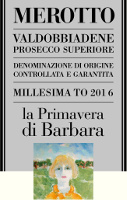
|
|
Valdobbiadene Prosecco Superiore Dry La Primavera di Barbara 2016 |
|
| Merotto (Veneto, Italy) | |
 Glera (90%), Perera (10%) Glera (90%), Perera (10%) | |
| Price: € 14.00 | Score: |
 Intense greenish yellow and nuances of greenish yellow, very
transparent, fine and persistent perlage. Intense greenish yellow and nuances of greenish yellow, very
transparent, fine and persistent perlage.
 Intense, clean, pleasing and refined, starts with hints of apple, peach
and wisteria followed by aromas of pear, pineapple, tangerine, hawthorn,
broom and plum. Intense, clean, pleasing and refined, starts with hints of apple, peach
and wisteria followed by aromas of pear, pineapple, tangerine, hawthorn,
broom and plum.
 Effervescent attack with pleasing sweetness, however balanced by
alcohol, good body, intense flavors, pleasing crispness. Effervescent attack with pleasing sweetness, however balanced by
alcohol, good body, intense flavors, pleasing crispness.
 Persistent finish with flavors of apple, pineapple and peach. Persistent finish with flavors of apple, pineapple and peach. Refermented in closed tanks. Refermented in closed tanks. |
|
 Risotto with crustaceans, Sauteed crustaceans, Vegetable puddings, Dairy products Risotto with crustaceans, Sauteed crustaceans, Vegetable puddings, Dairy products |
|
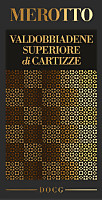
|
|
Valdobbiadene Superiore di Cartizze Dry 2016 |
|
| Merotto (Veneto, Italy) | |
 Glera Glera | |
| Price: € 18.00 | Score: |
 Brilliant greenish yellow and nuances of greenish yellow, fine and
persistent perlage, very transparent. Brilliant greenish yellow and nuances of greenish yellow, fine and
persistent perlage, very transparent.
 Intense, clean, pleasing and refined, starts with hints of pear, peach
and wisteria followed by aromas of apple, pineapple, hawthorn, tangerine,
jasmine, broom and plum. Intense, clean, pleasing and refined, starts with hints of pear, peach
and wisteria followed by aromas of apple, pineapple, hawthorn, tangerine,
jasmine, broom and plum.
 Effervescent and crisp attack, however balanced by alcohol, good body,
intense flavors, pleasing sweetness. Effervescent and crisp attack, however balanced by alcohol, good body,
intense flavors, pleasing sweetness.
 Persistent finish with flavors of apple, pear and pineapple. Persistent finish with flavors of apple, pear and pineapple. Fermented in closed tank for 50 days. Fermented in closed tank for 50 days. |
|
 Aperitifs, Crustacean appetizers, Sauteed crustaceans, Risotto with vegetables Aperitifs, Crustacean appetizers, Sauteed crustaceans, Risotto with vegetables |
|
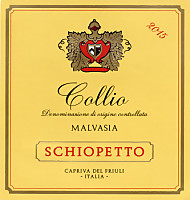
|
|
Collio Malvasia 2015 |
|
| Schiopetto (Friuli Venezia Giulia, Italy) | |
 Malvasia Istriana Malvasia Istriana | |
| Price: € 11.00 | Score: |
 Brilliant greenish yellow and nuances of greenish yellow, very
transparent. Brilliant greenish yellow and nuances of greenish yellow, very
transparent.
 Intense, clean, pleasing and refined, starts with hints of apple, pear
and peach followed by aromas of plum, pineapple, hawthorn, lychee, broom
and almond. Intense, clean, pleasing and refined, starts with hints of apple, pear
and peach followed by aromas of plum, pineapple, hawthorn, lychee, broom
and almond.
 Crisp attack and however balanced by alcohol, good body, intense
flavors, agreeable. Crisp attack and however balanced by alcohol, good body, intense
flavors, agreeable.
 Persistent finish with flavors of peach, apple and almond. Persistent finish with flavors of peach, apple and almond. 8 months in steel tanks, 5 months in bottle. 8 months in steel tanks, 5 months in bottle. |
|
 Fish appetizers, Pasta with fish and crustaceans, Sauteed fish Fish appetizers, Pasta with fish and crustaceans, Sauteed fish |
|
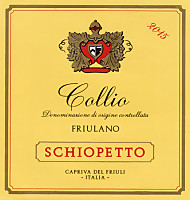
|
|
Collio Friulano 2015 |
|
| Schiopetto (Friuli Venezia Giulia, Italy) | |
 Friulano Friulano | |
| Price: € 11.00 | Score: |
 Intense straw yellow and nuances of straw yellow, very transparent. Intense straw yellow and nuances of straw yellow, very transparent. Intense, clean, pleasing and refined, starts with hints of pear, apple
and hawthorn followed by aromas of peach, almond, citrus fruits, broom and
mineral. Intense, clean, pleasing and refined, starts with hints of pear, apple
and hawthorn followed by aromas of peach, almond, citrus fruits, broom and
mineral.
 Crisp attack and however balanced by alcohol, good body, intense
flavors, pleasing roundness. Crisp attack and however balanced by alcohol, good body, intense
flavors, pleasing roundness.
 Persistent finish with flavors of apple, peach and plum. Persistent finish with flavors of apple, peach and plum. 8 months in steel tanks. 8 months in steel tanks. |
|
 Stuffed pasta, Roasted white meat, Broiled fish, Mushroom soups Stuffed pasta, Roasted white meat, Broiled fish, Mushroom soups |
|
|
||||||||
|
DiWineTaste Polls
|
| |||||||
Privacy Policy | |||||||


| Copyright © 2002-2024 Antonello Biancalana, DiWineTaste - All rights reserved |
| All rights reserved under international copyright conventions. No part of this publication and of this WEB site may be
reproduced or utilized in any form or by any means, electronic or mechanical, without permission in writing from DiWineTaste. |